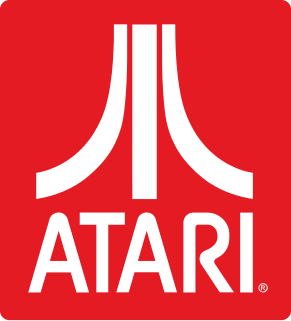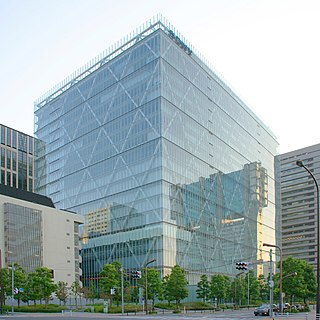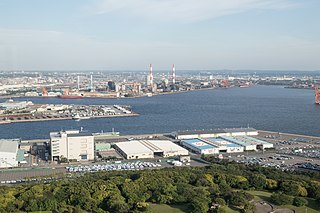Native name | 株式会社工人舎 |
|---|---|
| Type | Public company |
| Founded | December 13, 2004 |
| Headquarters | , |
| Parent | Inventec |
| Website | www |
Kohjinsha was a Japanese PC manufacturer best known outside Japan for their current SA1F00 UMPC. In November 2006, the company announced KOHJINSHA SA, a series of lightweight computers of simple configuration, that come with a high specification for the price, attracting the attention of enthusiast market. According to market information firm BCN, it was the market leader in Japan for computers with screens smaller than 11 inches.

Atari is a brand name that has been owned by several entities since its inception in 1972. It is currently owned by French publisher Atari SA through a subsidiary named Atari Interactive. The original Atari, founded in Sunnyvale, California, in 1972 by Nolan Bushnell and Ted Dabney, was a pioneer in arcade games, home video game consoles and home computers. The company's products, such as Pong and the Atari 2600, helped define the electronic entertainment industry from the 1970s to the mid-1980s.

Sony Group Corporation, commonly stylized as SONY, is a Japanese multinational conglomerate corporation headquartered in Minato, Tokyo, Japan. As a major technology company, it operates as one of the world's largest manufacturers of consumer and professional electronic products, the largest video game console company and the largest video game publisher. Through Sony Entertainment Inc, it is one of the largest music companies and the third largest film studio, making it one of the most comprehensive media companies. It is the largest technology and media conglomerate in Japan. It is also recognized as the most cash-rich Japanese company, with net cash reserves of ¥2 trillion.
The video game crash of 1983 was a large-scale recession in the video game industry that occurred from 1983 to 1985, primarily in the United States. The crash was attributed to several factors, including market saturation in the number of game consoles and available games, many of which were of poor quality, as well as waning interest in console games in favor of personal computers. Home video game revenues peaked at around $3.2 billion in 1983, then fell to around $100 million by 1985. The crash abruptly ended what is retrospectively considered the second generation of console video gaming in North America. To a lesser extent, the arcade game market also weakened as the golden age of arcade video games came to an end.

MSX is a standardized home computer architecture, announced by Microsoft and ASCII Corporation on June 16, 1983. It was initially conceived by Microsoft as a product for the Eastern sector, and jointly marketed by Kazuhiko Nishi, then vice-president at Microsoft and director at ASCII Corporation. Microsoft and Nishi conceived the project as an attempt to create unified standards among various home computing system manufacturers of the period, in the same fashion as the VHS standard for home video tape machines.

NEC Corporation is a Japanese multinational information technology and electronics corporation, headquartered in Minato, Tokyo. The company was known as the Nippon Electric Company, Limited, before rebranding in 1983 as NEC. It provides IT and network solutions, including cloud computing, artificial intelligence (AI), Internet of things (IoT) platform, and telecommunications equipment and software, to business enterprises, communications services providers and to government agencies, and has also been the biggest PC vendor in Japan since the 1980s, when it launched the PC-8000 series.
In the history of video games, the third generation of game consoles, commonly referred to as the 8-bit era, began on July 15, 1983 with the Japanese release of two systems: Nintendo's Family Computer and Sega's SG-1000. When the Famicom was released outside of Japan it was remodelled and marketed as the Nintendo Entertainment System (NES). This generation marked the end of the video game crash of 1983, and a shift in the dominance of home video game manufacturers from the United States to Japan. Handheld consoles were not a major part of this generation; the Game & Watch line from Nintendo and the Milton Bradley Microvision that were sold at the time are both considered part of the previous generation due to hardware typical of the second generation.

Mitsubishi Electric Corporation, established on 15 January 1921, is a Japanese multinational electronics and electrical equipment manufacturing company headquartered in Tokyo, Japan. It is one of the core companies of Mitsubishi. The products from MELCO include elevators and escalators, high-end home appliances, air conditioning, factory automation systems, train systems, electric motors, pumps, semiconductors, digital signage, and satellites.

The Daihatsu Move is a kei car/city car manufactured by the Japanese automaker Daihatsu since August 1995. The Move is Daihatsu's response to the similarly designed Suzuki Wagon R that was introduced two years earlier in 1993. The Move is built upon the chassis of the Mira but with a taller body.
A personal computer game, also known as a PC game or computer game, is a type of video game played on a personal computer (PC) rather than a video game console or arcade machine. Its defining characteristics include: more diverse and user-determined gaming hardware and software; and generally greater capacity in input, processing, video and audio output. The uncoordinated nature of the PC game market, and now its lack of physical media, make precisely assessing its size difficult. In 2018, the global PC games market was valued at about $27.7 billion.

The Suzuki Cultus is a supermini car produced by the Japanese manufacturer Suzuki from 1983 to 2016. The nameplate is currently used as a rebadged second-generation Suzuki Celerio in Pakistan since 2017. It was first presented at the 25th Tokyo Motor Show, formally introduced to Japan in 1983 and ultimately sold in seven countries across three generations and marketed worldwide as the Suzuki Swift for the first two generations. An alliance formed in 1981 between General Motors, Suzuki and Isuzu allowed GM to market the Cultus as a captive import internationally under more than a dozen nameplates including the Geo Metro, Chevrolet Sprint, Pontiac Firefly and Holden Barina. It was also known as the M-car within GM.

The PC-9800 series, commonly shortened to PC-98 or 98, is a lineup of Japanese 16-bit and 32-bit personal computers manufactured by NEC from 1982 to 2000. The platform established NEC's dominance in the Japanese personal computer market, and, by 1999, more than 18 million units had been sold. While NEC did not market these specific machines in the West, it sold the NEC APC series, which had similar hardware to early PC-98 models.

Japan's major export industries include automobiles, consumer electronics, computers, semiconductors, copper, and iron and steel. Additional key industries in Japan's economy are petrochemicals, pharmaceuticals, bioindustry, shipbuilding, aerospace, textiles, and processed foods.
LISMO is an online music service provided by au, a Japanese mobile phone brand run by KDDI, a Japanese telecommunication company. This service uses a mobile phone as a music player. This service was introduced on January 19, 2006, and the service began operating at the end of January in Japan. The first mobile phone which supports LISMO was sold on January 26, 2006. Since 2008, KDDI and Okinawa Cellular introduced 'LISMO Video', a new service with new means to enjoy video content as well.

Phil Harrison is a vice president and general manager for Google, and the former corporate vice president of Microsoft. Previously, Phil was the British corporate executive and a representative director of Sony Computer Entertainment, Inc. (SCEI) and Executive Vice President of Sony Computer Entertainment Europe (SCEE). At E3 in 2005 he showcased the first public realtime demonstrations of PlayStation 3 development hardware. On 3 March 2008, Infogrames Entertainment SA announced Harrison was their new President and Directeur Général Délégué. On 29 May 2009, it was announced that Harrison had become the non-executive director of Atari, formerly Infogrames Entertainment SA.

Inventec Corporation is a Taiwan-based Original Design Manufacturer (ODM) making notebook computers, servers and mobile devices. Originally established in 1975 to develop and manufacture electronic calculators, major customers include Hewlett-Packard, Toshiba, Acer, and Fujitsu-Siemens.
Optonica was a subdivision of Japanese electronics manufacturer Sharp that made high-end hi-fi products systems.
These tables provide a comparison of netbooks.

Japanese encephalitis vaccine is a vaccine that protects against Japanese encephalitis. The vaccines are more than 90% effective. The duration of protection with the vaccine is not clear but its effectiveness appears to decrease over time. Doses are given either by injection into a muscle or just under the skin.

The IBM Personal Computer XT is the second computer in the IBM Personal Computer line, released on March 8, 1983. Except for the addition of a built-in hard drive and extra expansion slots, it is very similar to the original IBM PC model 5150 from 1981.

A word processor (WP) is a device or computer program that provides for input, editing, formatting, and output of text, often with some additional features.